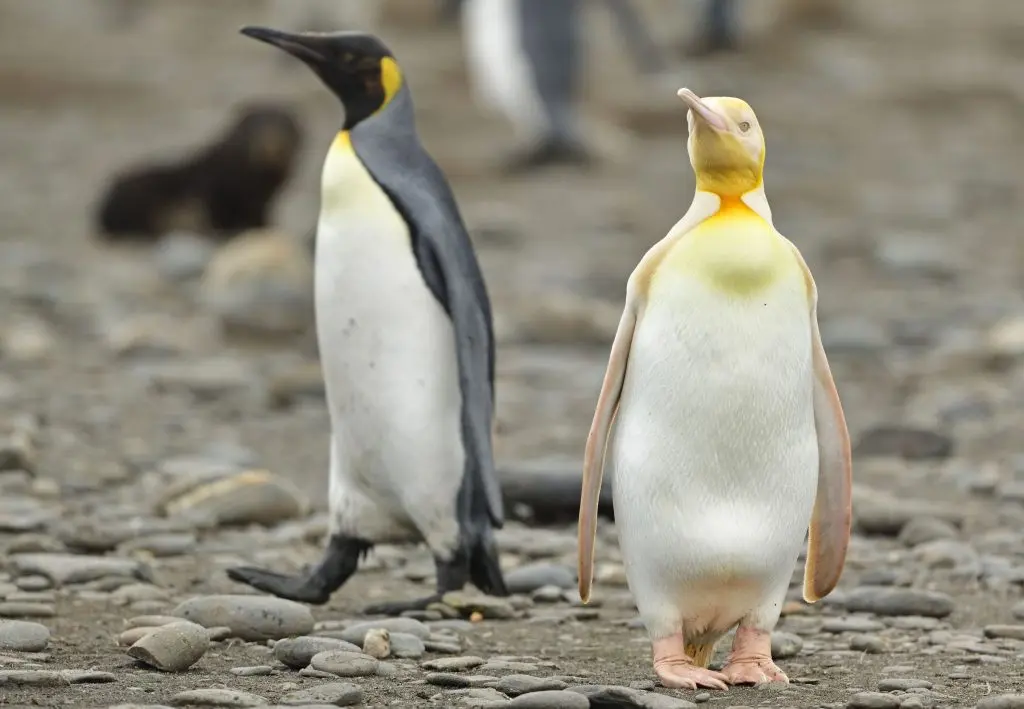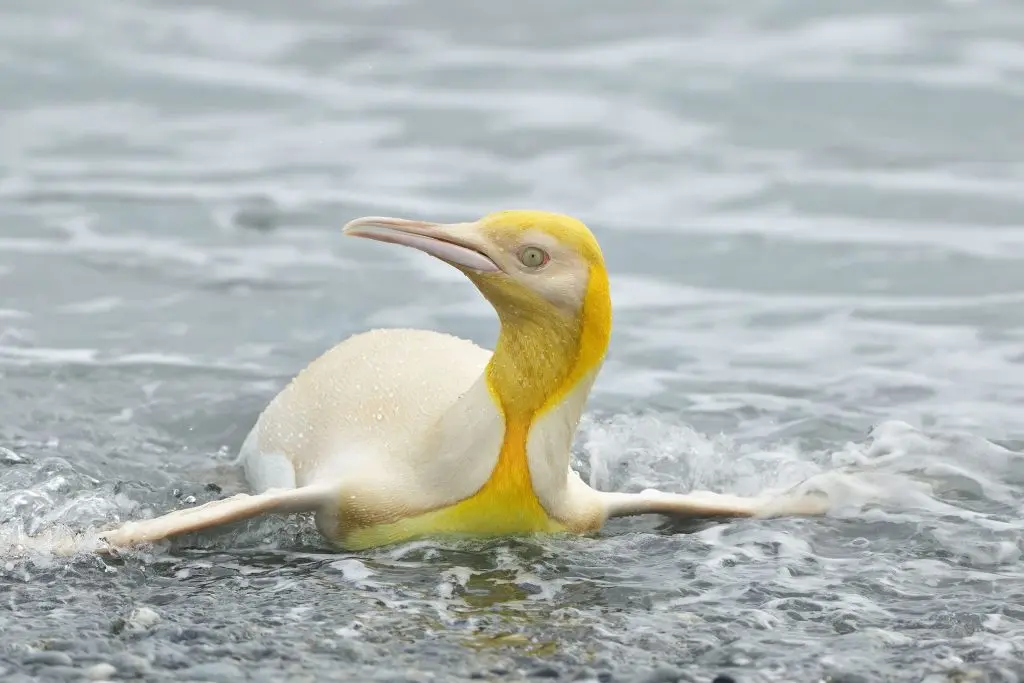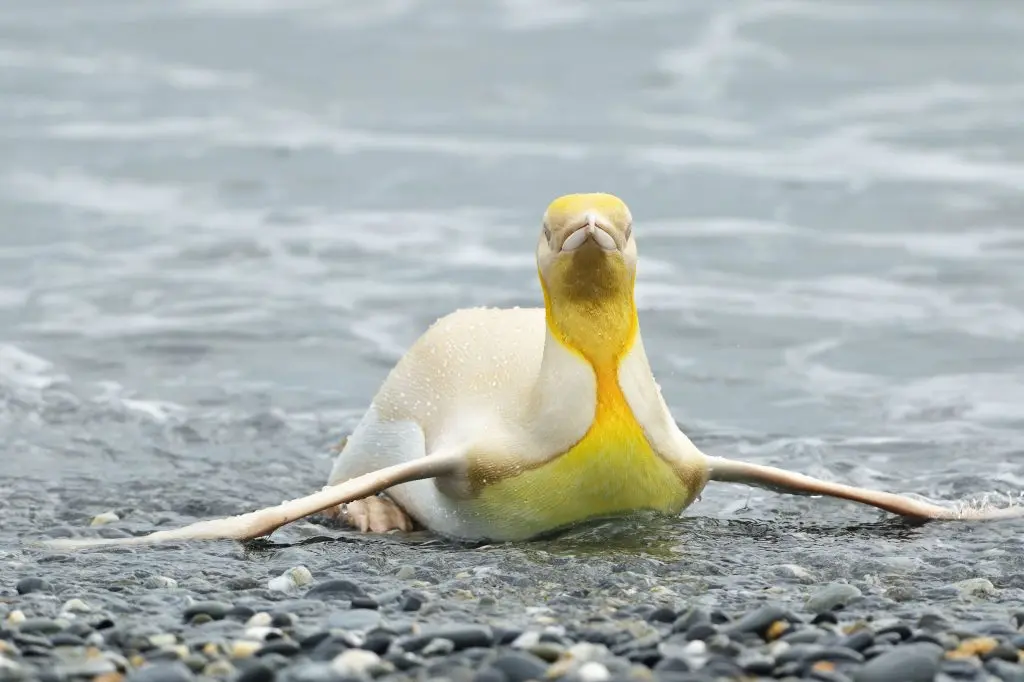Have you ever thought that a penguin could be painted in bright yellow instead of the traditional black and white? In the frozen world which is the home of penguins, seeing such an extraordinary color is like looking for a needle in a haystack. However, this is not something that just exists in the realm of imagination but was recently witnessed in the natural world. This article focuses on one of the most extraordinary occurrences in the world of wildlife and science – the appearance of a yellow penguin. Find out why this little yellow penguin is so much more than an oddity – it is a true treasure of the animal world.
1. Background on Penguin Varieties
1.1 General Penguin Information
Penguins are birds that cannot fly and are mainly found in the southern regions of our planet, including Antarctica. Emperor Penguin is the largest penguin while the Adélie Penguin is smaller but has better maneuverability. These birds usually live in Arctic circles and depend on a layer of fat and thick feathers to keep warm.
1.2 Color Variations
Most penguins are black and white birds but variants exist. On the white part of the belly, it is usually difficult for the predator to see since it contrasts with the darker upper part of the skin, making it difficult to see from above or below the water surface. Some of them may have variations such as the bluish-grey of the Little Penguin. These variations are mainly due to genetic differences within species and influences of the environment.
1.3 Introduction to the Yellow Penguin
It was in the waters near the South Georgia Island which is known for its abundant wildlife population. Photographed in 2020 by a wildlife photographer, a penguin that is colored yellow instead of black on its body is quite rare and has attracted the attention of many scientists and bird lovers. It is probably as the result of a genetic abnormality which has to do with skin coloration.

Photo: Yves Adams/Kennedy News & Media
2. The Discovery
2.1 The Photographer’s Tale
When on an expedition for photography of wildlife of South Georgia Island, an expert photographer came across a sight he had never imagined. In the middle of black and white colored penguins, there was this one bird that had a yellow feather. This particular sighting made an ordinary photographic expedition an extraordinary event since the sighting was rare. When this playful penguin made its appearance in front of the camera lens, the photographer realized they had stumbled across something that could make the world take notice.
2.2 Setting the Scene
It occurred on a routine foggy morning in the sub-Antarctic area. The scenes were shot in the impressive territory of South Georgia Island characterized by severe climate, cold, and stony shores. The sea made a lulling sound as a number of penguins walked along the coast. The air was fresh and had a nautical smell which made it even more magical to meet the yellow penguin in the midst of the regular ones.

Photo: Yves Adams/Kennedy News & Media
3. Scientific Perspective
3.1 Expert Opinions
Scientific opinions have been expressed by biologists and ornithologists regarding the yellow coloration of the penguin and they have said that the bird is very rare indeed. As indicated by specialists, such color variations are normally caused by genetic mutations. These mutations can affect how the pigment is synthesized or where it is deposited in the feathers. The yellow hue of this particular penguin is believed to be due to a variation in melanin production which typically produces the black and white colors of the bird.
3.2 Genetic Anomalies or Diet
Scientists have come up with two main hypotheses to explain the presence of the yellow pigment. The first one is a genetic mutation theory where it is believed that there could be a mutation that as a result changed the normal pigment to yellow. The second theory focuses on diet factors that may affect feather coloration. However, most of the authorities are inclined towards the genetic factor since dieting is usually not very influential in the matter. Continued study of this penguin’s DNA may give clearer answers and help us to know more about color differences in animals.

Photo: Yves Adams/Kennedy News & Media
4. Impact of the Discovery
4.1 Conservation Efforts
This discovery has made people focus again on the plight of penguins especially the yellow penguin species. This is an indication of the variety that exists in the penguin family and this calls for more research and preservation of their natural environment. The conservationists are optimistic that this new species will help people appreciate the challenges that penguins are facing in the wild including climatic change and pollution of the waters. Education and awareness about these species and their fragile ecosystem would lead to more funding and support for conservation efforts.
4.2 Public Interest
The response to the discovery of the yellow penguin has been well received and largely positive. It has garnered much attention from the public and the researchers, and significantly discussed through the media and on social platforms. This particular sighting does not only interest bird watchers and wildlife enthusiasts alone but it also gets the attention of other people who are not so curious about the various kinds of penguins. The interest that is being created by this unique yellow skinned penguin is getting better information on the need for wildlife conservation thus the impact that one natural occurrence could make to create an international concern on the little that is known about these birds.
Conclusion
It is more than just a story from the wilderness; it brings home the message that Mother Nature continues to defy human imagination with her prodigal display of wonders. It reminds people about the activities done for preservation of species as well as the significance of diversity in context to the world we live in. Such peculiar instances promote more research and studies and make us realize the importance of protecting such kinds of species in the natural world. This golden character can remind one of the secrets still lurking in nature and that it is our duty to protect animals and flora and fauna of this planet.
You may be interested in reading this article: The Dragon Blood Tree: The Tree That Bleeds Blood. We also invite you to explore more of our captivating content on our channel. Double muak!
